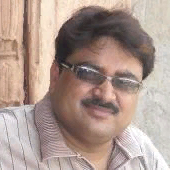International Journal of Intelligent Systems and Applications (IJISA)
IJISA Vol. 5, No. 11, 8 Oct. 2013
Cover page and Table of Contents: PDF (size: 641KB)
Modified Approach for Harmonic Reduction in Transmission System Using 48-pulse UPFC Employing Series Zig-Zag Primary and Y-Y Secondary Transformer
Full Text (PDF, 641KB), PP.70-79
Views: 0 Downloads: 0
Author(s)
Index Terms
GTO Based Diode Clamped Inverter, FFT Algorithm, Harmonic Distortion, FACTS Devices, Unified Power Flow Controller
Abstract
In this paper THD (Total Harmonic Distortion) is analysed and compared by using UPFC in a multi-line transmission system of 500 KV having 5-buses in two different arrangements. The UPFC converters are arranged as a Diode Clamped multilevel Converter (DCMLC) that leads to the cost reduction as compared with other multi-level converters. The comparison has been done by both series zig-zag/2Y-2Δ and series zig-zag/4Y transformer configuration for 48-pulses GTO based diode clamped converter. The THD is reduced to 42.59% and 58.82% of input waveform at bus B2 by using series zig-zag/4Y transformer configuration. This transformer converter configuration also reduces the difficulty of designing the transformer winding ratio. For calculation of THD, FFT analysis is carried out using MATLAB.
Cite This Paper
Ragini Malviya, Rakesh Kumar Saxena, "Modified Approach for Harmonic Reduction in Transmission System Using 48-pulse UPFC Employing Series Zig-Zag Primary and Y-Y Secondary Transformer", International Journal of Intelligent Systems and Applications(IJISA), vol.5, no.11, pp.70-79, 2013. DOI:10.5815/ijisa.2013.11.08
Reference
[1]N. G. Hingorani and L. Gyugyi, Understanding FACTS, Concepts, and Technology of Flexible AC Transmission Systems. Piscataway, NJ: IEEE Press, 2000.
[2]Gyuygi L.,"Unified power flow controller Concept for Flexible AC Transmission Systems”, IEEE Proceeding, vol.-139, no.-4, pp.323-331, July 1992
[3]Paserba, John J. "How FACTS controllers-benefit AC transmission systems."Transmission and Distribution Conference and Exposition, 2003 IEEE PES. Vol. 3. IEEE, 2003
[4]Huang, Zhengyu, et al. "Application of unified power flow controller in interconnected power systems-modeling, interface, control strategy, and case study." Power Systems, IEEE Transactions on 15.2 (2000): 817-824.
[5]Chengaiah, C., and R. V. S. Satyanarayana. "Power flow assessment in transmission lines using Simulink Model with UPFC." Computing, Electronics and Electrical Technologies (ICCEET), 2012 International Conference on. IEEE, 2012.
[6]Gyugyi L., Rietman L.R. and EdrisA. “UPFC: A New Approach to Power Transmission Control”, IEEE Transactions on Power Delivery, vol.-10, no.-2, pp. 1085- 1097, April 1995.
[7]El. Moursi, M. S., and A. M. Sharaf., "Novel controllers for the 48-pulse VSC STATCOM and SSSC for voltage regulation and reactive power compensation."Power Systems, IEEE Transactions on 20.4 (2005): 1985-1997.
[8]S. Kouro, M. Malinowski, K. Gopakumar, J. Pou, L. G.Franquelo, Wu ,J.Rodriguez,M.A.Perez,and J. I. Leon, “Recent advances and industrial applications of multilevel converters,” IEEE Trans.Ind. Electron., vol. 57,no. 8, pp. 2553–2580, Aug. 2010.
[9]J. S. Lai, F. Z. Peng, “Multilevel Converters - A New Breed of Power Converters,” IEEE Transactions on Industry Applications, vol. 32, no. 3, May 1996, pp. 509-517
[10]Keri A.J.F., Mehraban A.S., Elriachy A., Lombard X. and Edris A., “A Unified Power Flow Controller (UPFC): Modelling and Analysis”, IEEE Transactions on Power Delivery, vol.-14, no.-2, pp. 648-654, April 1999.
[11]Soto-Sanchez, Diego E., and Tim C. Green. "Voltage balance and control in a multi-level unified power flow controller." Power Delivery, IEEE Transactions on16.4 (2001): 732-738.

